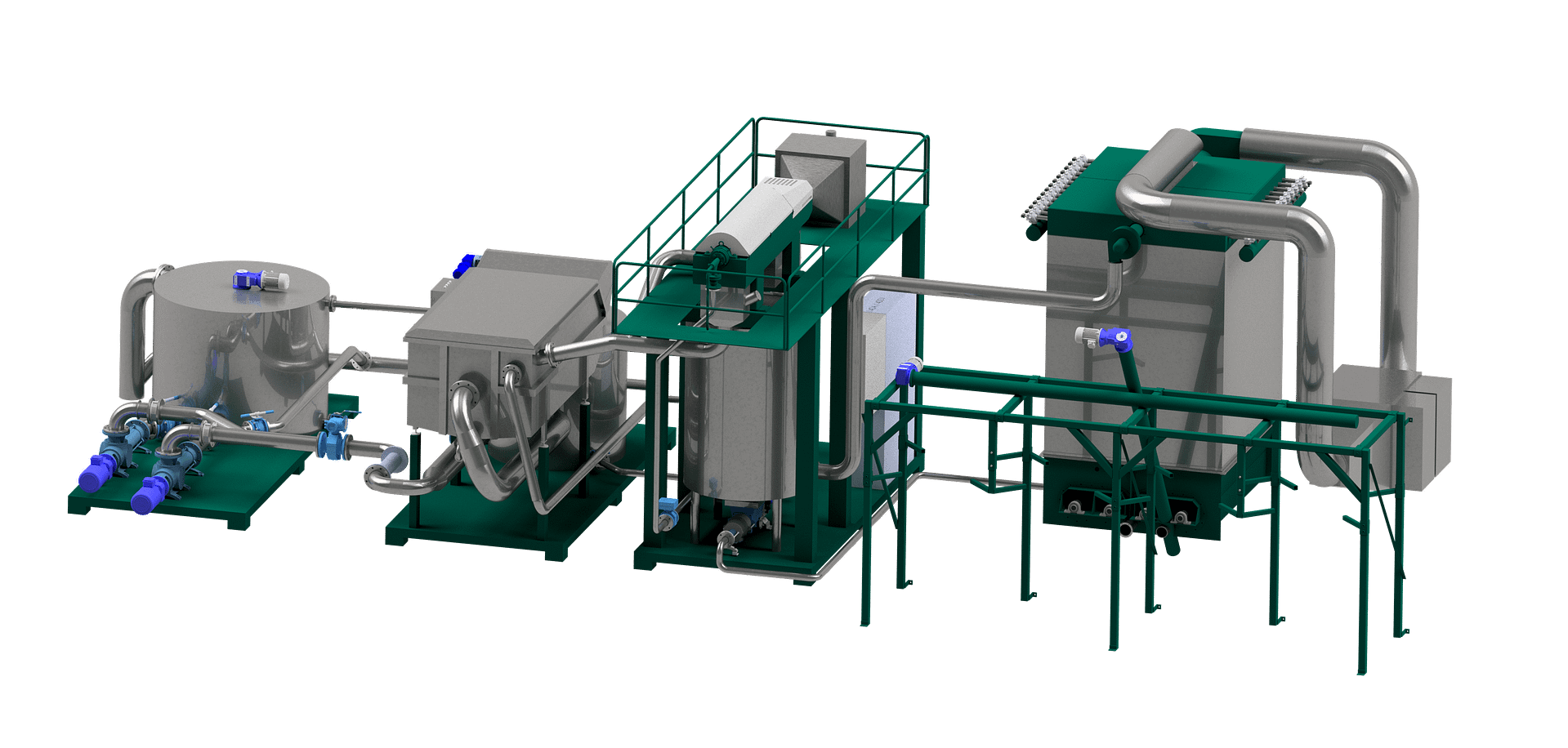Complete Sludge Treatment
Sludge treatment based on mechanical dewatering and “superheated” steam drying. It dries fish sludge to a hygienized and storage-stable dry matter before it is transported for further processing. The dry matter is used as a raw material in sustainable and environmentally friendly products.
The interface is customized according to the flow rate and quantity of fish sludge, meeting the strictest requirements at all times. The sludge treatment technology utilizes our own Bioretur drying solution, which also ensures heat recovery.
Example of a complete Bioretur sludge facility

Collection tank
In this tank, sludge is fed from the fish farm. The sludge has a dry matter content of between 0.1 – 0.5%.
Belt filter
The belt filter removes most of the water in the sludge and is the first step in the mechanical dewatering process. The dry matter content of the sludge rises to 4 – 5% in this process.
Flocculation
Flocculation gives us an increased degree of cleaning in the belt filter. Flocculation can be done with the addition of polymer.
Decanter
The decanter centrifuge removes more water and increases the dry matter content in the sludge to between 20 – 30%.
Mantled sludge tank
Stores and preheats the sludge from the decanter before pumping it into the dryer.
Condenser
Reduces steam and can also contribute to heat recovery.
Bioretur dryer
The dryer uses superheated steam technology which evaporates the water efficiently, making the sludge a hygienized and dry powder with 90% dry solids content.
Collection of sludge
The hygienized and storage-stable sludge is transported out of the dryer in sequences and into a conveyor that distributes the sludge into bigbags. The dry sludge is weighed and labelled automatically before being picked up regularly by Bioretur for further handling.
Heat recovery
This loop from the dryer transfers heat in the form of steam back to the dewatering system and can also be used as heating and energy at the fish farm.
This post is also available in: Norwegian Bokmål

